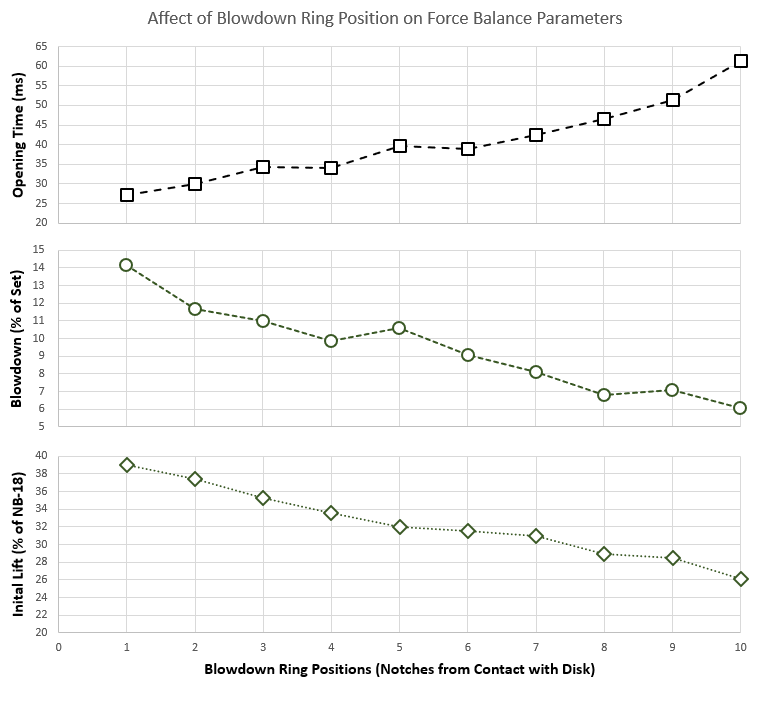About the Author
Mr. Smith has over a decade of experience, with a specialization in relief systems design and documentation, PSM compliance audit reviews, heat and material balance generation, PHA concern resolution, and flare system integration and optimization. Dustin is a chemical engineering graduate of Texas A&M University, a licensed Professional Engineer in Texas and LOPA certified.
How Relief Valve Assembly Affects Stability Calculations
Topics: Relief Systems, Relief Device Study, Relief System Design, Relief Systems Revalidation, Process Safety
"Great teamwork is the only way we create the breakthroughs that define our careers."
As we enter 2020, most of us have already taken a moment to reflect on last year's successes and failures. (At least on a personal level.) A somewhat painful and unavoidable exercise to help guide your decisions in the upcoming year.
However, how many have taken stock of our past decade's personal successes and failures?
If you haven't, quickly give it a shot right now.
Topics: PSM Review, Industry Compliance, Compliance, OSHA, SIL Design, SIS Design, PSM Audit, Regulatory Compliance, Gap Assessment, Relief System Design, Relief Systems Revalidation, Relief Valve Mitigation, Relief Header, Flare Header Analysis, Allowable Backpressure, Spring Loaded Valves, CAPEX, Disposal System Design, Dynamic System Modelling
We are excited to announce Mr. John Burgess will be presenting "The Unintended Consequences of Relief Device Pipe Modification" at tomorrow's REMBE's Safety Conference.
REMBE® Process Safety Days is a two-day networking event with highly topical presentations, live demonstration and an extraordinary evening event. It is dedicated to engineers, planners, operators, technicians, maintainer, safety inspectors, technical experts and inspection personnel in supervising organisations.
Topics: PSM Review, PSM Audit, Regulatory Compliance, Gap Assessment, Relief System Design, Relief Systems Revalidation
Establishing and maintaining an effective safety culture is a symphony of challenges and moving pieces.
Too often, those responsible engineers are stretched thin with competing priorities. Smith & Burgess is here to help. Our culmination of Process Safety knowledge enables us to quickly provide our clients with practical solutions that lead to compliance, significant cost-savings, and of course, peak facility safety.
Topics: PSM Review, Industry Compliance, Compliance, OSHA, SIL Design, SIS Design, PSM Audit, Regulatory Compliance, Gap Assessment, Relief System Design, Relief Systems Revalidation, Relief Valve Mitigation, Relief Header, Flare Header Analysis, Allowable Backpressure, Spring Loaded Valves, CAPEX, Disposal System Design, Dynamic System Modelling
Top Ten Things Affecting the Quality of your Relief Validation Study
Pressure relief systems and devices are used to prevent equipment and pipework from over-pressurization which can lead to mechanical failure and associated release of containment.
In order to function correctly, relief systems need to be properly designed to recognized standards, correctly installed and properly maintained. Changes to associated plant and pipework also need to be appropriately managed; often, seemingly unrelated changes can have an impact on the relief case of the system and render it incapable of protecting the system as designed. This is seen particularly on older plants with poor change management history.
The following list provides some details on the areas you should focus on when improving the quality of your Relief Validation Study.
Topics: Process Safety Optimization, Engineering Review, Engineering Analysis, Relief System Design, Relief Systems Revalidation
Case Study: Relief Systems Evaluation and Mitigation
The Opportunity:
A major United States Refinery hired Smith & Burgess to perform a site-wide revalidation.
Topics: Pressure Relief Valves, Relief Systems, Case Study, Refinery, Engineering Review, PRV Study, PRV, Relief System Design, Relief Systems Revalidation, Undersized PSVs
Case Study: Third Party Relief Valve Mitigation Review
The Opportunity:
A major US refinery used a competing engineering contractor to perform a flare and relief systems analysis. Upon completion of the project, the refinery was left with a list of facility upgrades that management deemed excessive. Smith & Burgess was hired to review the relief and flare systems documentation and provide engineering solutions that met corporate and industry requirements.
Topics: Pressure Relief Valves, Relief Systems, Flare Mitigation, Action Item Resolution, Case Study, Refinery, Engineering Review, PRV Study, Third Party Review, Overly Conservative Assumptions, PRV, Relief System Design, Relief Systems Revalidation, Relief Valve Mitigation, Mitigation






